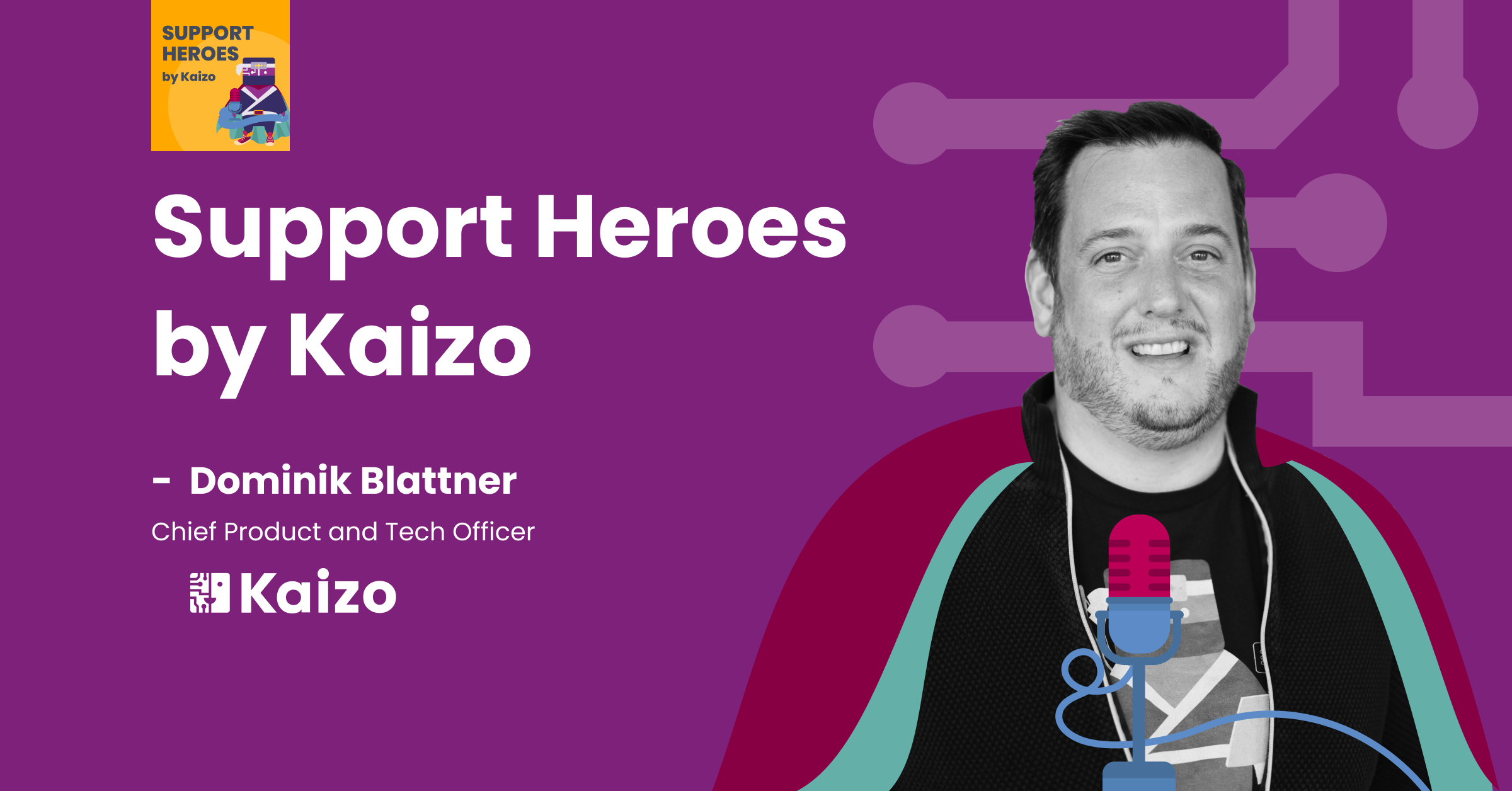Click ‘subscribe’ in the bottom right of the player to listen or download from Apple Podcast, Spotify, Google Podcast, and Amazon Music.
The thirty-eighth episode of Support Heroes by Kaizo featured Dominik Blattner — Chief Product and Tech Officer at Kaizo.
Dominik saw a 7-year success with his first start-up, which he then moved on from in order to focus on Kaizo in 2018 and further hone his skills in enterprise processes and workflows; Kaizo was also his first real introduction to a customer support role. Although never working directly as an agent, Dominik has acted as a consultant and, by extension, the central go-between for clients and the helpdesk for a number of years. In this episode, Dominik offers his perspective on how he has seen gamification be leveraged to drive team productivity.
“The help desk is very much the intersection of the people doing work for the department and actually implementing the work and then the structure of organizing the work… These two themes are what a lot of support managers and agents contend with.”
The beginning of Kaizo
“What happened was, because my old company was facing so many IT desk help centres, we screwed up a bit on the selling and enterprise side; as such, we had to do something a bit ‘crazy’ at the end to try to give it one more shot. Since I knew we wouldn’t get many new clients at my new start-up, we approached smaller start-ups and asked them if we could test some things with them. So when the old company stopped working, I was left with a bunch of clients who I had gotten familiar with over the past few years and was facing so many new challenges in my business. I felt like, ‘Hey, here is a real opportunity to [provide an offer that is 100% customer-driven].’ I contacted them and asked if they would join us in this venture. We were starting with no offer, no product, just a vision.”
- When Kaizo was launched, its foundations were built on customer support. It started with no vision and no offerings other than the passion to fill one need: simplifying support leads’ workflow processes. Dominik contacted customers from his first start-up and offered to meet with them every two weeks in order to build a platform and offering that was 100% geared towards their needs and continuous feedback.
- The thought behind creating Kaizo was this: offer customers a solution they can steer. Because of this, Kaizo provided Dominik the opportunity to, from day one, resolve these contacts’ problems in a way that wasn’t available to him during the days of his first start-up.
- At the time of Kaizo’s launch, there was no one platform that teaches both the managerial and interpersonal skills of top-level management and the mathematical, analytical side that workers use to understand and implement metrics. Kaizo’s roots in customer support helped it become a solution for support leads looking to enmesh these skill sets in order to drive both team productivity and customer satisfaction.
What were the problems Kaizo was trying to solve?
“[During my first start-up] we were really focused on analytics, KPIs, performance management, and workflow management. These were topics that came from the old product, with which we were facing the problem of scaling […] To be able to manage that part, you need a product that’s scalable.”
- KPIs, metrics, and any indicators in general are paramount to a business’s success. However, Dominik and the team of his first start-up determined that there was a significant part of their workforce who were frequently left out of these metrics and were instead instructed to focus on management.
- As a business, how can you combine the skill of being able to convey the meaning of these important KPIs with empathy and social skills? This was one of the main problems Kaizo was left to solve.
- Another challenge Kaizo was trying to solve was how to have bottom-up involvement when you have, for example, five leaders managing 80 people. The larger the project gets, the more complicated the process of conveying these metrics becomes.
What instigated Dominik’s entry into customer support?
“The concept of customer support hasn’t really changed for the past 20, 30, even 40 years. It is always about serving the customer. And it’s very easy to adhere to a structure that is so well-structured and mature… that it becomes very handy to use this well-defined system, which automatically turns into a top-down situation which is applied again and again and again. This makes the room for innovation so small.”
- To drive team productivity, every team member needs to be involved in order to provide their input and foster innovation. Once Dominik came to this realization via working at his first start-up, he became fascinated with the concept of bettering what he viewed as an outdated system.
- After joining Kaizo, Dominik saw the opportunity to deepen his understanding of customer support and use his start-up’s previous challenges with not effectively scaling their internal processes in order to best fulfill their customers’ needs as a springboard for innovating the customer support and help desk relationship.
Translating metrics into points
“How can we translate metrics towards goals and, at the same time, not make it too complicated? This is where a points system can help you as an abstract layer to decomplexize the situation.”
- One of the challenges with metrics and points is having managerial agents easily conceptualize and convey metrics to both clients and other team members. This is especially true when team members are analyzing 15, 20, or even 40 metrics at a time. Typically, it’s recommended to focus on one or two metrics. However, there are common pitfalls associated with this: only focusing on a single broad metric, like customer satisfaction, or a metric that is too granular, which makes it difficult to measure it against other KPIs
- A points system that simplifies the process of measuring productivity by grouping metrics together into “points” in order to condense them into one, two, or sometimes three broader topics. This helps to set high-level goals while not leaving any metrics out. This kind of system can benefit agents by introducing them early to the KPIs that they need to track in order to achieve their goals. This, in turn, benefits their motivation, productivity, and knowledge within the industry.
- Example: an agent has set a goal to reply to tickets faster. To see the related points come in as a direct result of that agent targeting that goal is motivating and, when compounded week after week, yields long-term conversion. That agent can then walk away from that role knowing the exact steps they need to take in order to see that result and can apply that to future customer-facing positions.
Gamification addressing customer support challenges
“The joy of gamification is that you can always restart. You can always try again. Getting this experience of saying to yourself, ‘Okay, this is a new week: this last week either went well or not-so-well. But now, let’s bring some new elements into this week and make it more interesting so that it doesn’t get repetitive.”
- Gamification can help agents and managers deal with challenges by fighting off a feeling of stagnation, providing instant gratification (such as feeling a sense of accomplishment every Friday instead of waiting months for projects to wrap up), and enjoying reaching consistent milestones.
- Just like a real video game, successful gamification will incorporate a sense of “levelling up”: investing time and effort as you progress through harder and harder levels that, when you conquer that scale of difficulty, gives you a sense of both fulfillment and knowledge that you can use to make future related tasks easier, no matter how difficult they are.
- Successful gamification only works if the things expected by the player are things they can actually do. Only biting off as much as you can chew, so to speak, will ensure that this sense of accomplishment and learning will continue to be fostered (as well as guarantee that they are focusing on metrics that are relevant to them.)
Enhancing team engagement and motivation: the most detrimental blockers for improving customer service performance
“Agents can get penalized for something that isn’t in their area of work or influence. What we then came up with was the option for our agents to challenge negative reviews […] which was very interesting, because it made agents reflect on these situations and also gave each department more insight on individual situations. At the end of the day, we luckily created something that ended up being extremely useful for our business.”
- Negative responses can be unrelated to the agent’s work but, unfortunately, reflects on their ability to deliver customer satisfaction.
- To motivate agents when this happens, it is key to “make the game fair” and give them the power to protect their performance from outside factors. Tracking other KPIs provides a way to measure outliers, like a negative customer review, against both their overall and their week-by-week performance.
- Giving agents targets and measuring them on metrics that have an impact on the business promotes team engagement and keeps workers’ motivations high, even when the occasional negative review might roll in. This also arms the department with the tools they need to conduct fair internal reviews.


